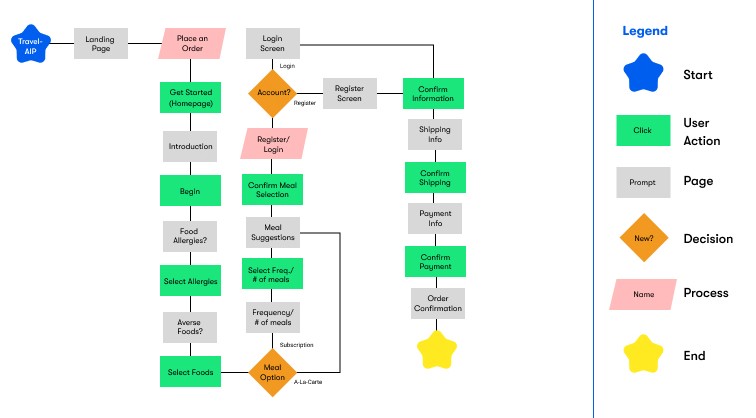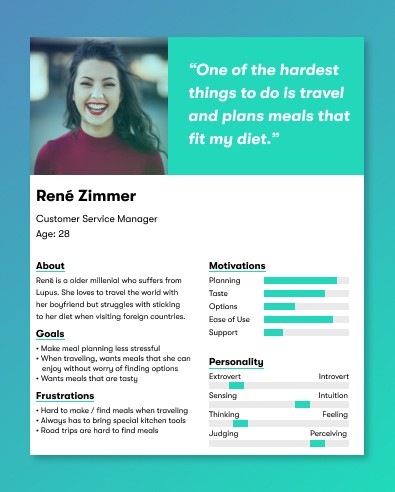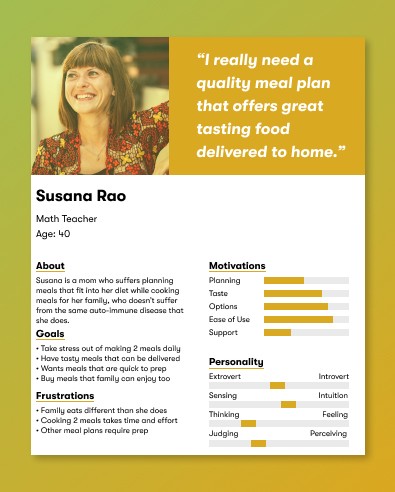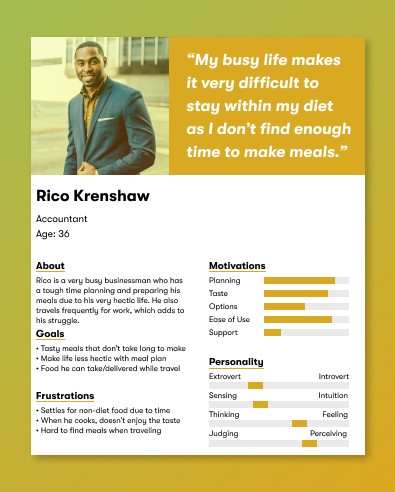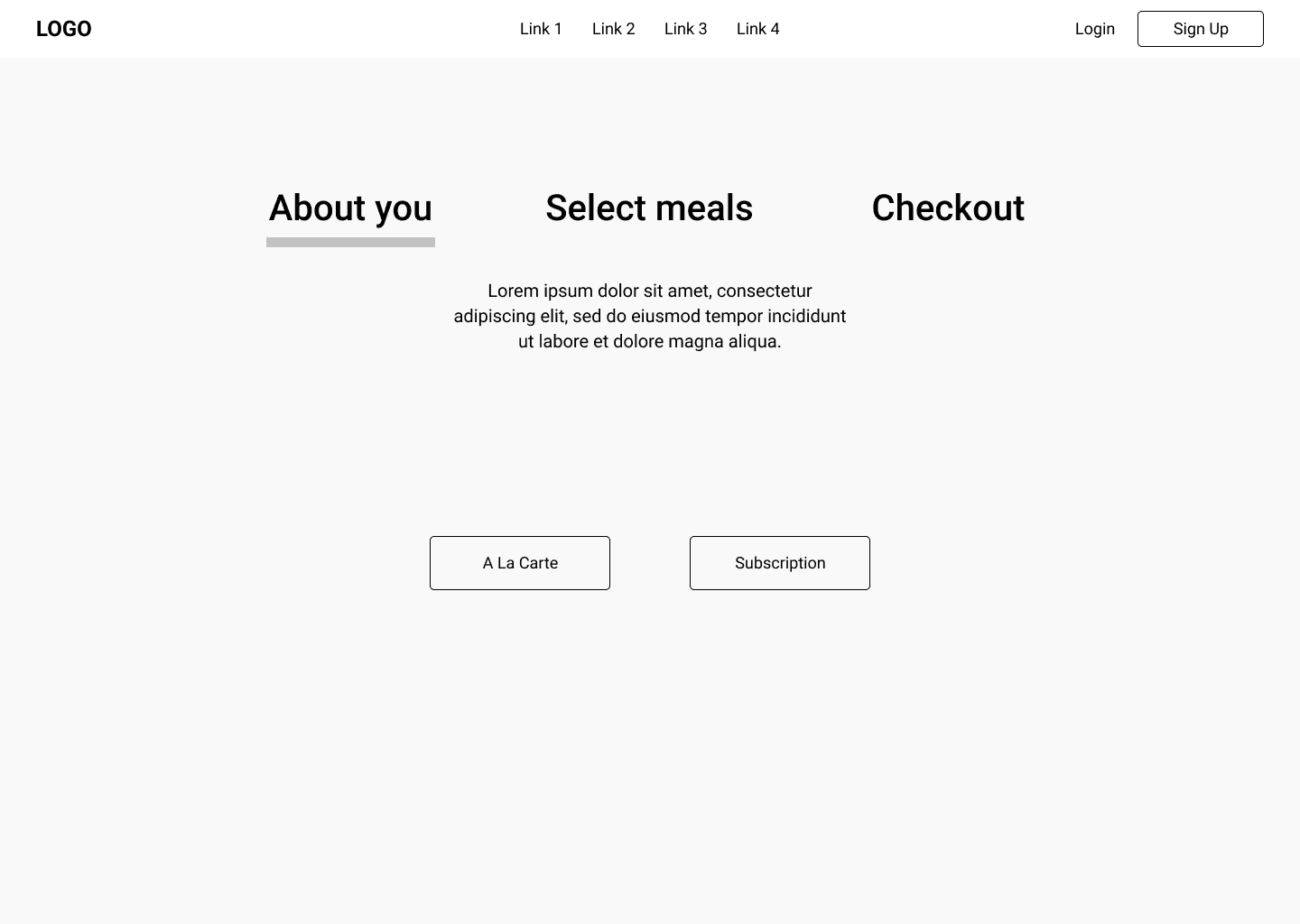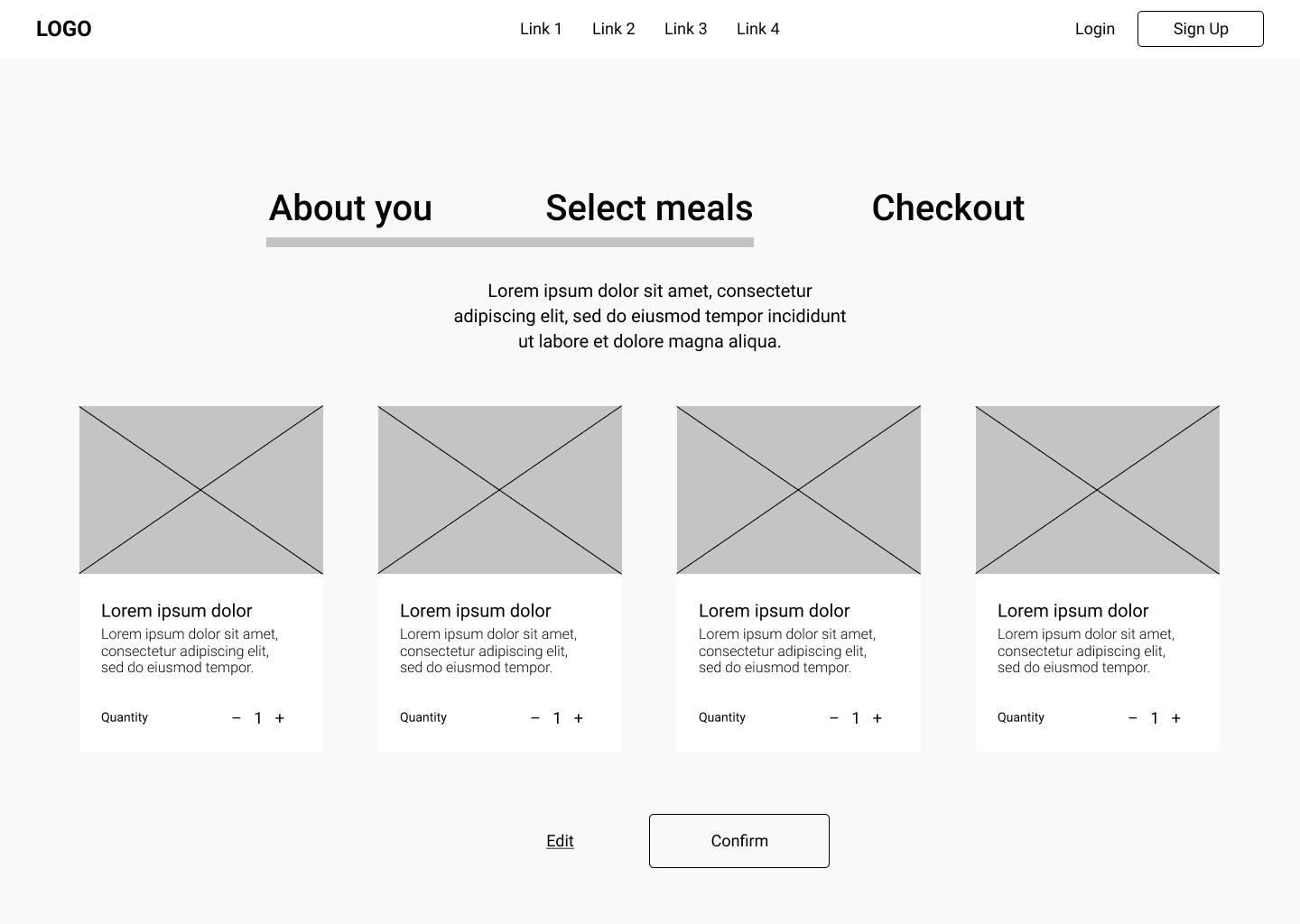Problem
TravelAIP, while unique in its niche, lacked direct competitors and required extra attention to food sensitivities. Therefore, I conducted competitive research to identify insights from similar businesses and did further research on understand the direct needs of those affected with autoimmune issues. Key findings included:
Users preferred guided checkout processes.
Recommendations based on user input (allergens, dietary needs, etc) were highly valued.
Users desired easy customization of meal options.
Options and clear meal imagery mattered significantly to users.
Process
Competitive Research: Despite the absence of direct competitors, I conducted in-depth research to understand indirect competitors. I discovered valuable insights, including users' preferences for guided checkouts and personalized recommendations.
Analysis and Personas: To present and analyze our research, I developed personas. These personas offered a visual representation of TravelAIP's target audience and were based on questionnaires from potential users.
Ideation of the Flow: With a clear understanding of user needs and personas, I crafted a user flow for the checkout process. This was a complex task that required meticulous attention to detail to ensure smooth recommendations and user-friendly navigation.
Wireframes: The final step involved creating wireframes for the checkout process. Utilizing all available resources, I designed a robust flow. A working prototype of these wireframes was presented to the TravelAIP founder, who enthusiastically embraced the proposed checkout sequence for implementation in their beta program.
Outcome
The outcome of this collaboration was the development of an effective checkout process tailored to TravelAIP's unique meal plan delivery service. The founder was excited about the solution, which was well-received and set to be implemented during the beta launch of the program.

